
views
Choosing the Right Size and Style
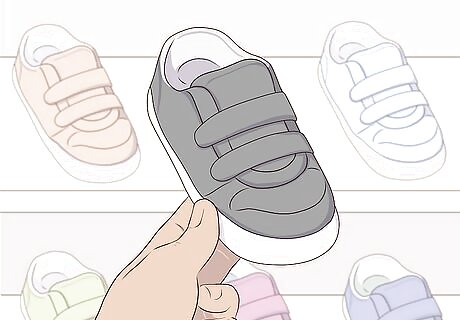
Buy new shoes for the baby instead of using hand-me-downs. Second-hand clothing is great for babies since they are always growing. But when it comes to shoes, second-hand shoes can be a real problem. This is because your baby’s feet are growing and developing and they need a supportive shoes. Hand-me-down shoes have already been broken in by another baby and can cause fit and comfort problems for your child.
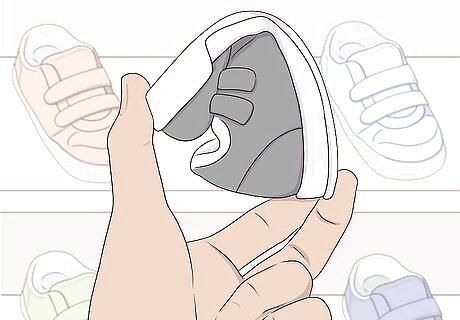
Select flexible and nonslip shoes for your baby. Most doctors agree that it’s best for babies to be barefoot, especially as they learn to walk. But when that’s not possible because you are outside or at a gathering where you feel bare feet might not be appropriate, opt for a shoe that is soft and flexible so you don't negatively affect the growth and development your baby's feet. Hard-soled shoes are bad for babies because they are too restrictive on their underdeveloped foot bones, muscles, and ligaments. If your baby is walking, still opt for soft and flexible shoes, but choose a style with traction on the bottom to prevent slips and falls.
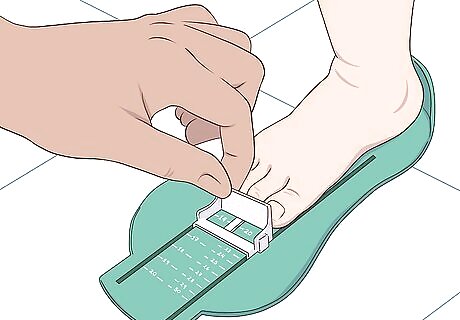
Have the baby’s foot measured by a professional. Even if you do not buy the shoes from a more expensive shoe store, it’s best to have an employee with the proper training and tools tell you what size shoe is best for your baby. You can go into any shoe store that sells children’s shoes and request for your baby’s foot to be measured. Once you know the size, you can shop around online or in other stores to find a shoe that is more in your price range. But this way, you have peace of mind knowing you went with the correct size.
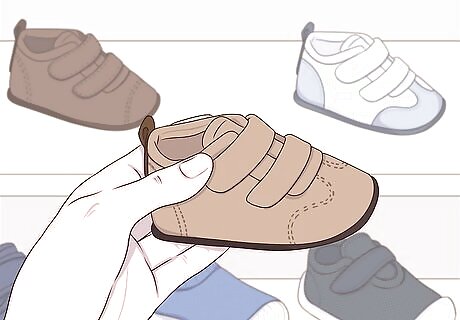
Choose a shoe that is simple to put on, but difficult to kick off. Adjustable velcro straps are great options for baby shoes because they are easy for you to put on and tighten, but difficult for a small child to loosen or take off. Slip-on shoes will likely be kicked off as soon as you put the baby down or buckle them into a car seat. Always look for shoes that have adjustable straps so you can tighten or loosen them as needed, ensuring a perfect fit. High-top laced or buckled shoes are a good idea for babies that are always trying to take off their shoes.

Opt for breathable material to keep the baby’s feet free from fungus. Plastic shoes are not only too inflexible to allow your baby’s feet to grow properly, but they don’t breathe and can cause athlete’s foot. Look for mesh, cotton, canvas, or leather shoes instead of plastic to keep your baby’s feet in great shape.

Let older babies take part in choosing their own shoes. If you are buying shoes for an older baby, let them take part in selecting the shoes so they can have a say in the color and style. If you can get the child excited about wearing the shoe, they will be more likely to keep wearing them when you aren’t looking.
Putting Baby’s Feet into Shoes

Open up the shoes wide enough to easily slide in the baby’s foot. Loosen any buckles or laces the shoes have and make sure you pull the tongue out all the way before trying to put your baby’s feet into their shoes. The wider you can open it, the easier it will be to get it on if the baby is fussy or not being cooperative. For laced or buckled shoes, pull all the laces out a little bit to make the shoe extra wide. It's much easier to tighten laces and buckles than it is to squeeze a baby's foot into a closed shoe. To widen slip-on shoes, put the forefinger and middle finger of one hand into the shoe and spread it apart as wide as you can before trying to put the baby's foot in it.
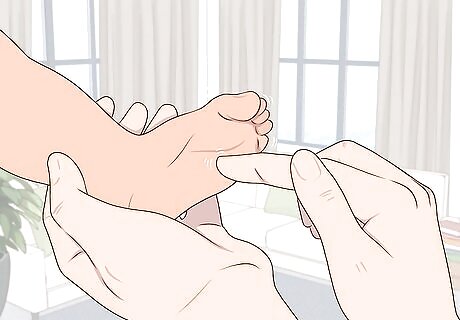
Tickle the bottom of your baby’s feet if they are curling their toes. Sometimes, when babies don’t understand why you are touching their feet, they naturally curl up their toes and get very rigid. To get the baby to relax and uncurl their toes, try tickling their bottom of their feet and making a game out of it. You can also try to press very gently on the top of your baby’s foot to get them to relax their toes.
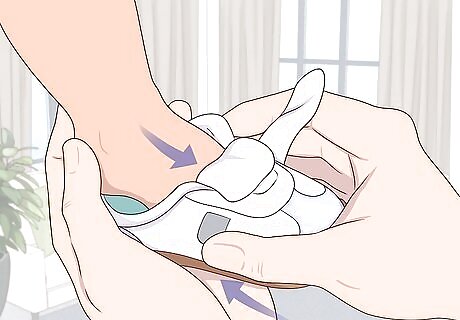
Slide the baby’s feet gently into their shoes. Once their shoes are open and their feet are relaxed, it should be easy to slide their feet gently into their shoes. With the shoe in one hand and the baby’s foot in the other, gently slip it into the shoe, toes first. If the baby's foot is not sliding gently into the shoe after you have opened it as wide as you can, you may have to rethink the size or style shoe that you chose. Every baby's foot is different and the most important thing when putting shoes on them is that their feet are comfortable and not restricted. You can buy baby-sized shoe horns if you are determined to get your baby's foot into a pair of stiff shoes for pictures or holiday gatherings. Just don't leave the baby's foot in the shoe for very long because it will be uncomfortable for them and bad for their feet.
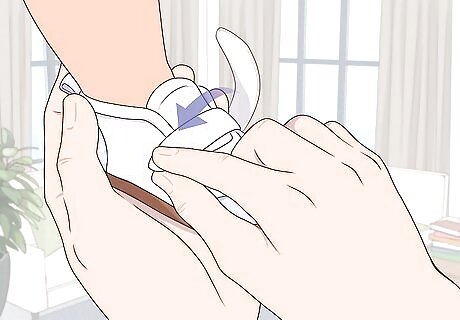
Buckle the shoe and check for a proper fit. Once the baby’s feet are completely in the shoe, pull the buckles or clasps closed. You want them to be tight enough that the shoes won’t fall off but not too tight that they hurt the baby. Squeeze the toe of the shoe to make sure the shoes are fitting properly. There should be space about the width of the side of your thumb between the tip of your baby's toes and the end of the shoe. If the baby keeps kicking off their shoes, check for a correct fit. If the shoe is too big, it will be easy for the baby to kick off. If it’s too small, the baby might be bothered by it and pull it off. Either way, you want to make sure the baby is comfortable with the fit to increase your chances that they will keep them on.











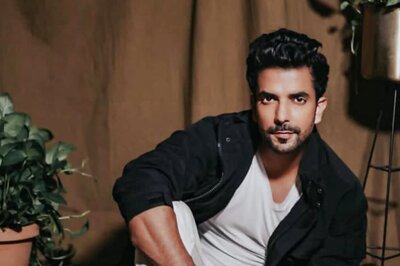
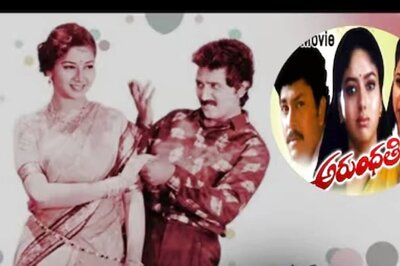


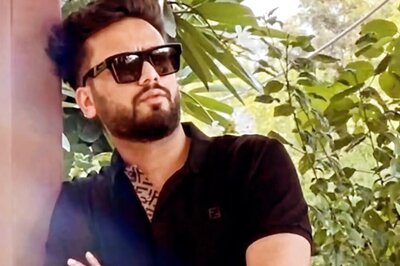


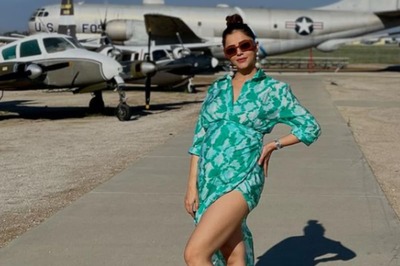
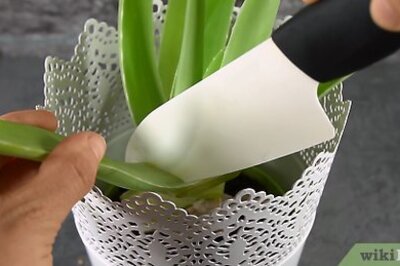
Comments
0 comment